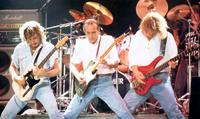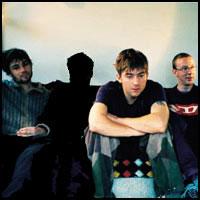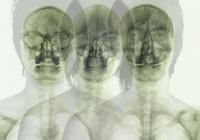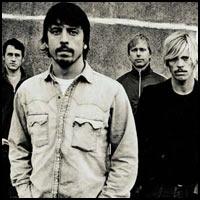
"Bohemian rhapsody" (or "Bo rhap" as it is often called) consistently features in Best Song Ever polls and is one of those songs for which the title does not appear anywhere within the words.
Upon its release in November 1975, Queen's fourth album, entitled "A Night At The Opera" was being billed as "the most expensive ever made". After lengthy rehearsals, the four months recording sessions took place at no fewer than six studios - Sarm, Roundhouse Olympic, Rockfield, Scorpio and Lansdowne. Freddie Mercury (vocals) : "We had all the freedom we wanted, and we were able to go to greater extremes. We wanted to experiment with sound. Sometimes we used three studios simultaneously". The experiment was quite obvious with "Bohemian rhapsody", that featured elements of ballad, opera and rock.
Some band members said that Freddie had worked out the entire song in his head and basically just directed the band through the song, first playing a backing track of piano, bass and drums. Roy Thomas Barker (producer) : "Freddie was sitting in his apartment, and he had an idea for the song. He didn't have it all quite worked out, but the basic framework was there. Then he stopped and said, 'Now dears, this is where the opera section comes in!' And I thought, 'Oh my God!'" According to Baker, the song's operatic section was originally intended only to be a brief interlude. But Mercury saw it somewhat differently. "He'd walk in and say, 'We'll just stick some 'Galileos' in here'! It got longer and longer, and we kept adding blank tape. Every day we'd think we were done, and then Freddie would come in say 'I've added a few more 'Galileos' here, dear'!" Mercury himself later admitted that "'Bohemian rhapsody' took bloody ages to record".
The song took almost three weeks to record with the operatic section alone taking seven days to complete. The backing track came together quickly, but the band and their producer spent days overdubbing the vocals in the studio using a 24 track tape machine. By the time they were done, about 120 vocal tracks were layered together. Mercury : "That middle section got longer and longer and longer … We were all in hysterics when it was being recorded. It was quite a mammoth task … between the three of us we recreated a 160 to 200 piece choir effect … we had to sit there going 'no, no, no, no, no, no, no!' about 150 times."
Here's how Wikipedia (
http://www.wikipedia.org/) very accurately describes the song from beginning to end : "The song begins with an a cappella introduction, which are all Mercury doubletracked. This is followed by a ballad, which is again mostly Mercury's vocals. The guitar enters during the second verse, with Brian May [guitars] playing a series of harmonies. After the lyric "shivers down my spine", May created a 'shiver' sound by playing the strings behind the bridge of his guitar. At the end of the second verse, the first guitar solo appears. This was created by May, and it is melodically different from the verses as he didn't like a guitar solo to be just the melody repeated. Now begins a pseudo-operatic midsection. This features interplay between Mercury and a solo piano. The choir effect was created by having Mercury, May and Taylor sing separate low, mid and high sections three times. The band used the bell effect for lyrics "Magnifico" and "Let him go." Also on "Let him go", Taylor singing the top section carries his note on further after the rest of the 'choir' have stopped singing. This operatic section leads to an aggressive hard rock section with a guitar riff that was written by Mercury. After double tracked vocals by Mercury over the top of the guitar, there are three guitar runs, that May described as something he had to "battle with" when performing the song live, but he pulled it off. The song then returns to the ballad style. As the lyrics "ooh yeah, ooh yeah" are sung, a guitar is played in the background to give the effect of trumpets. This was done by playing the guitar through an amp designed by Deacon. The song progressively becomes quieter until finally closing with the barely audible sound of a gong. The sections may appear separate, but there are numerous lyrical and musical motifs that they share. For instance, there are melodic motifs that occur in the ballad which foreshadow parts of the operatic section". Wikipedia also mentions that the introduction to the song is based on the chorus of a piece by Mercury's former band, Ibex.
When it was complete, Queen felt "Bohemian rhapsody" rested firmly on the right side of the ludicrous. May : "We're not into over-the-top productions for the sake of it, but because it highlights the music. That's the object in our eyes". Over-the-top or not, EMI weren't initially impressed with "Bo rhap". Requests were made to cut the middle section of the song. It was argued that radio stations would not play the song, as it was twice the normal length of a single and other record labels would object to it getting double the airplay. The middle section was not cut out, but the actual length was reduced to 5:55 (instead of 7:00) for release as a single. The record company leaked the song to a London radio station in order to build anticipation for the album. DJ Kenny Everett played it a reported fourteen times during his two weekend shows on Capital Radio. The DJ was a friend of the band. When asked if Mercury had ever divulged the song's meaning to him, he revealed the stark truth: "Freddie once told me that 'Bohemian rhapsody' was just 'random, rhyming nonsense'!"
On stage, "Bohemian rhapsody" presented Queen with a problem. The middle section couldn't be reproduced live. Similar dilemmas with "Sgt. Pepper" and "Strawberry Fields Forever" had prompted the Beatles to give up touring altogether, but, for Queen, technology was available to lend a hand. When "Bo rhap" was performed on the following tour, pre-recorded tapes were played during the operatic interlude (and were also used as the band's introduction), while the band vacated the stage, later to return for the song's finale.
Having challenged the three-minute pop rule by releasing a single nearly twice the normal length, Queen went on to set another precedent with the film clip used to promote it. It was the first music video in the sense that it was shot in video instead of film. John Deacon (bass) : "People used to have clips before, but they were all shot on film. "Bohemian rhapsody" was shot on video in about four hours." May : "Everyone thought the film was a huge production. But it was really easy to do, and since then we've spent a lot of time on films which probably aren't as good, and certainly didn't get the exposure." The video was based on their album cover, with the 4 band members looking up into the shadows, and it started a trend in the UK of making videos for songs to air in place of live performances (in this case, it is because the song was particularly difficult to play live).
"Bohemian rhapsody" topped the charts for nine weeks when it was released in 1975, and went on to achieve legendary status when the British Phonographic Industry bestowed the Britannia Award for "The Best British Pop Single Of The Last 25 Years" in 1977.
After Mercury's death in 1991, the song was reissued and again reached No. 1, this time for five weeks. In UK, the proceeds went to the Terrence Higgins Trust, which Mercury supported. In the US, proceeds went to the Magic Johnson AIDS Foundation (Johnson and Mercury being 2 of the first celebrities to get AIDS).
The song also enjoyed renewed popularity in 1992 as part of the soundtrack to the film "Wayne's World". A new video was released, intercutting excerpts from the film with footage from the original Queen video.
Ironically, the song that knocked "Bohemian rhapsody" off the #1 chart position in the UK, in 1975, was "Mama mia" by Abba : the words "Mama mia" are repeated in this in the line "Oh mama mia, mama mia, mama mia let me go."
Available on the album "A Night At The Opera". It can also be found, of course, on any Queen best of.
 It’s a song that appeared on an album that guitar shredder Yngwie Malmsteen released in 1995. Malmsteen : "I had that riff for a while. I remember I put some funky parts in the middle of the song. I thought that was cool. I also thought the pedal-tone licks were so cool. I remember coming up with the riff while relaxing in a lounge room and playing guitar. I don't remember it well as a whole song".
It’s a song that appeared on an album that guitar shredder Yngwie Malmsteen released in 1995. Malmsteen : "I had that riff for a while. I remember I put some funky parts in the middle of the song. I thought that was cool. I also thought the pedal-tone licks were so cool. I remember coming up with the riff while relaxing in a lounge room and playing guitar. I don't remember it well as a whole song".








